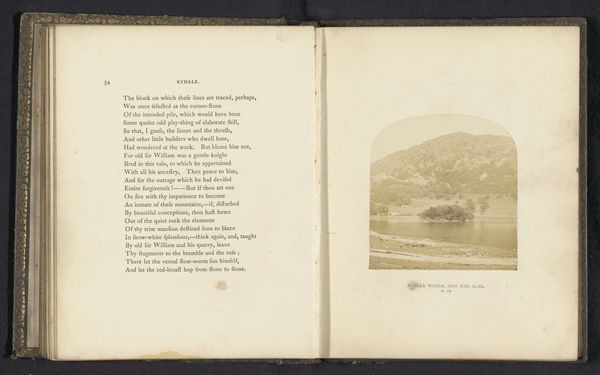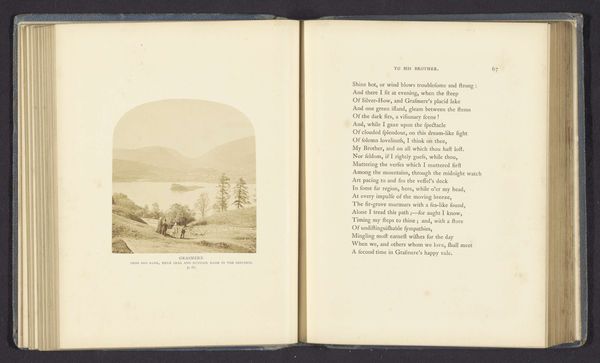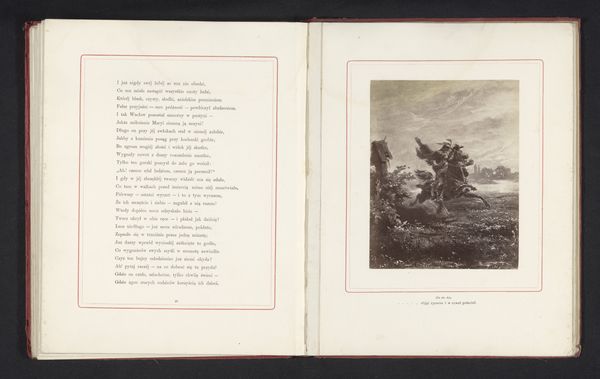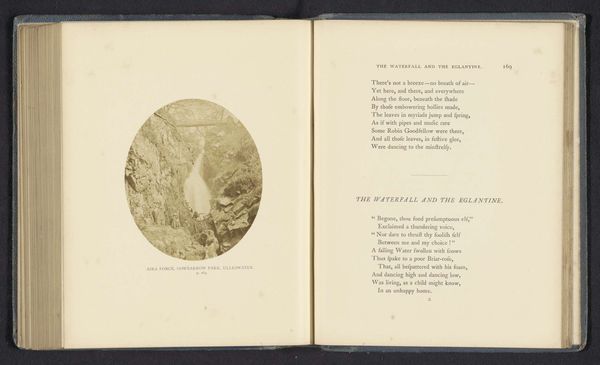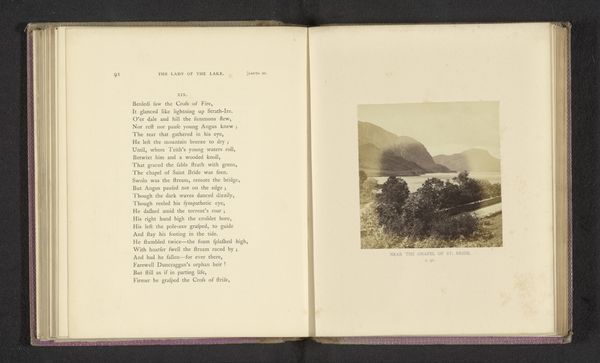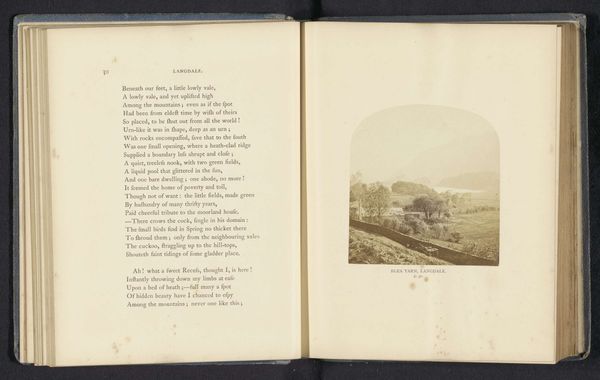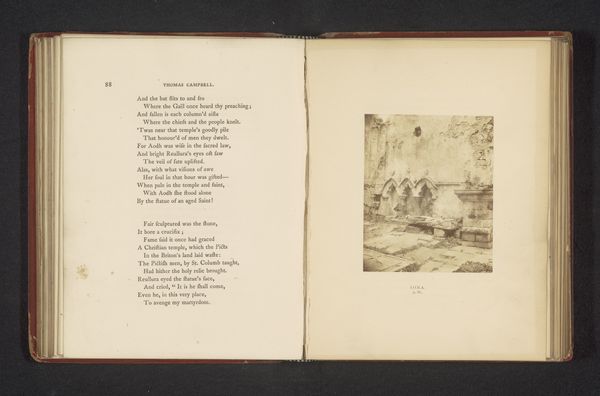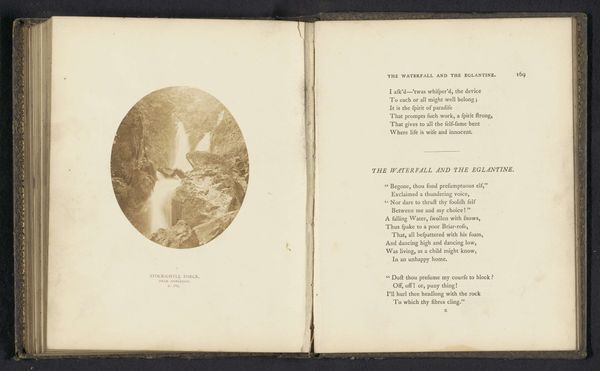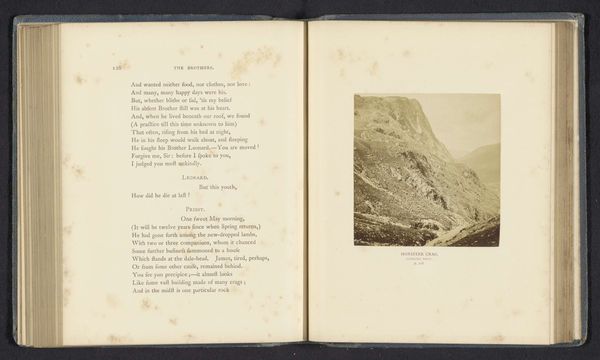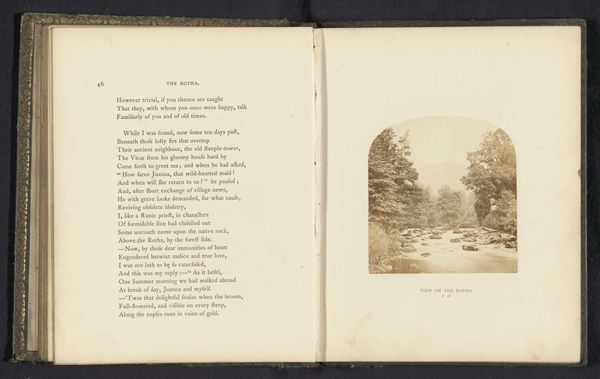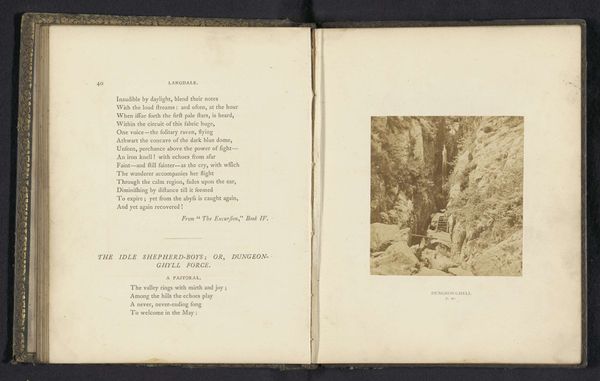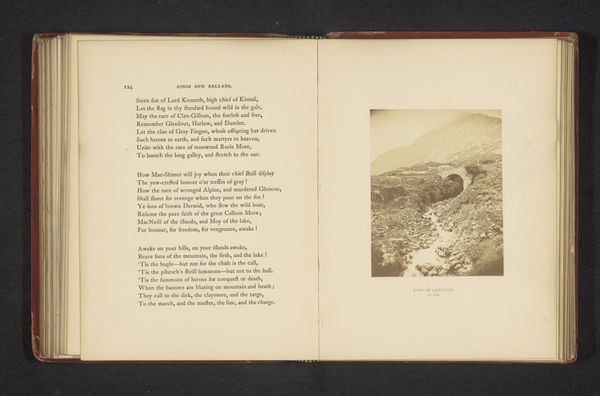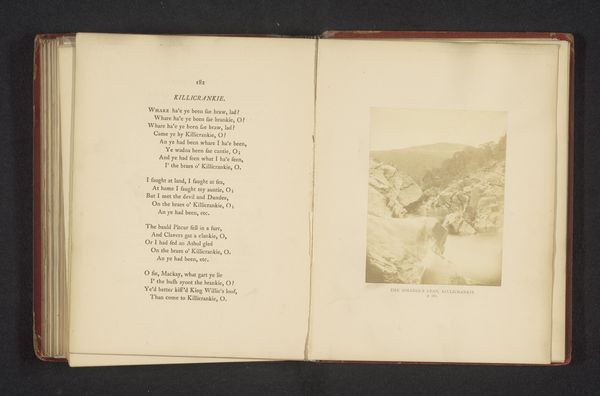
Dimensions: height 88 mm, width 89 mm
Copyright: Rijks Museum: Open Domain
Curator: This striking image is a photograph entitled "The Bowder Stone, Borrowdale" by Thomas Ogle, dating from before 1864. It's an albumen print, a process quite popular in the mid-19th century. Editor: Ah, the Bowder Stone! It looms there, almost defying gravity. I feel a peculiar sense of stillness radiating from it. Like the calm before a storm. Did you feel that when you first encountered it? Curator: Absolutely. The sheer mass of the rock against the delicate detail achievable through albumen printing is what grips me. Ogle meticulously captured the stone's texture and its precarious position in the landscape. It speaks to the human desire to control and understand nature through observation and documentation. Editor: I can also sense Ogle attempting to grasp at a much deeper mystery in its rough textures. A stone resting on very few supports, surrounded by hills that could dwarf us if the photo wasn't so cleverly cropped into a contained circle! You can feel an anxious tension—almost a sublime fear—as though it may crush you at any moment. It has Romantic overtones, wouldn't you agree? Curator: Most certainly. Its context within the history of photography and how it documented the changing landscape alongside geological interests would point to romantic ideas. The material composition of the albumen print—paper coated with egg white—allowed for such tonal richness, amplifying the scene's dramatic qualities and bringing nature to the domestic space, in the home. Editor: I guess so, I wonder about Ogle's motivation. Did he mean to provoke unease, wonder, or scientific understanding? Perhaps it’s both? Its stark, earthy monochrome feels both ancient and alien; something timeless, almost a monument, and profoundly moving. Like looking into the earth's soul. Curator: A sentiment not unshared in 19th century Britain as photography began permeating daily life. Looking closely at these natural landscapes became increasingly valued. Ogle, by extension, gave tangible weight to concepts like the sublime through the interplay of materiality, Romanticism, and his own social context. Editor: Indeed. Gazing at it longer, I wonder: do you also see more than a landscape captured in print? I feel more of the internal made external... Curator: An astute observation! Thank you for sharing your unique insights. Editor: The pleasure was mine. And yours!
Comments
No comments
Be the first to comment and join the conversation on the ultimate creative platform.
